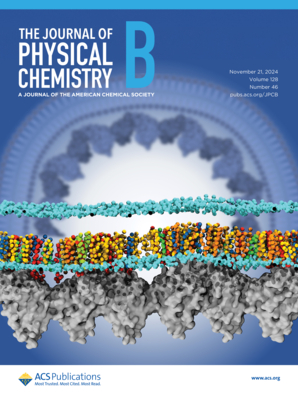摘要
低温保存是指利用低温保存和储存生物材料。低温保存有多种方法,通常包括使用低温保护剂,即用于降低水的冰点的溶质。等压(恒定体积)低温保存是过去 18 年来逐渐受到关注的一种低温保存方式。这种方法利用了水在冻结时会膨胀的反常性质。利用冰在冻结时膨胀的特性在系统中产生压力,从而限制冰的生长。在这项工作中,我们利用吉布斯热力学、埃利奥特等人的多绝对渗透virial方程、冰Ih的费斯特尔和瓦格纳相关性,以及液态水在低温高压下的热力学特性的格林克和埃利奥特相关性,来预测当溶液等时冷却时,压力、冰的体积分数和未冻结部分的溶质浓度是如何变化的。然后,我们通过预测盐溶液以及含有氯化钠和常用冷冻保护剂有机化合物(甘油、乙二醇、丙二醇和二甲亚砜)的三元水溶液的实验结果,验证了我们的模型。我们发现,我们的模型能准确预测低温保护剂浓度高达 5 M、温度低至 -25 °C 时收集到的实验数据。由于我们已经证明,只要压力不高于 400 兆帕,我们的液态水相关性(本工作的基础)可以准确预测-70 °C的温度,因此我们预计本工作中介绍的预测方法将准确预测-70 °C的温度。在这项工作中,我们还模拟了在室温下密封等温室与在成核温度下密封等温室对等温冷冻的影响。这项工作中开发的预测方法可用于未来等速冷冻实验和方案的设计。

Cryopreservation is the preservation and storage of biomaterials using low temperatures. There are several approaches to cryopreservation, and these often include the use of cryoprotectants, which are solutes used to lower the freezing point of water. Isochoric (constant-volume) cryopreservation is a form of cryopreservation that has been gaining interest over the past 18 years. This method utilizes the anomalous nature of water in that it expands as it freezes. The expansion of ice on freezing is used to induce a pressure in the system that limits ice growth. In this work, we use Gibbsian thermodynamics, the Elliott et al. multisolute osmotic virial equation, the Feistel and Wagner correlation for ice Ih, and the Grenke and Elliott correlation for the thermodynamic properties of liquid water at low temperatures and high pressures to predict how the pressure, volume fraction of ice, and solute concentration in the unfrozen fraction change as the solution is cooled isochorically. We then verified our model by predicting experimental results for saline solutions and ternary aqueous solutions containing NaCl and organic compounds commonly used as cryoprotectants: glycerol, ethylene glycol, propylene glycol, and dimethyl sulfoxide. We found that our model accurately predicts experimental data that were collected for cryoprotectant concentrations as high as 5 M, and temperatures as low as −25 °C. Since we have shown that our liquid water correlation, on which this work was based, makes accurate predictions to −70 °C, as long as the pressure is not higher than 400 MPa, we anticipate that the prediction methods presented in this work will be accurate down to −70 °C. In this work we also modeled how sealing the isochoric chamber at room temperature versus at the nucleation temperature impacts isochoric freezing. The prediction methods developed in this work can be used in the future design of isochoric cryopreservation experiments and protocols.

 求助内容:
求助内容: 应助结果提醒方式:
应助结果提醒方式:


